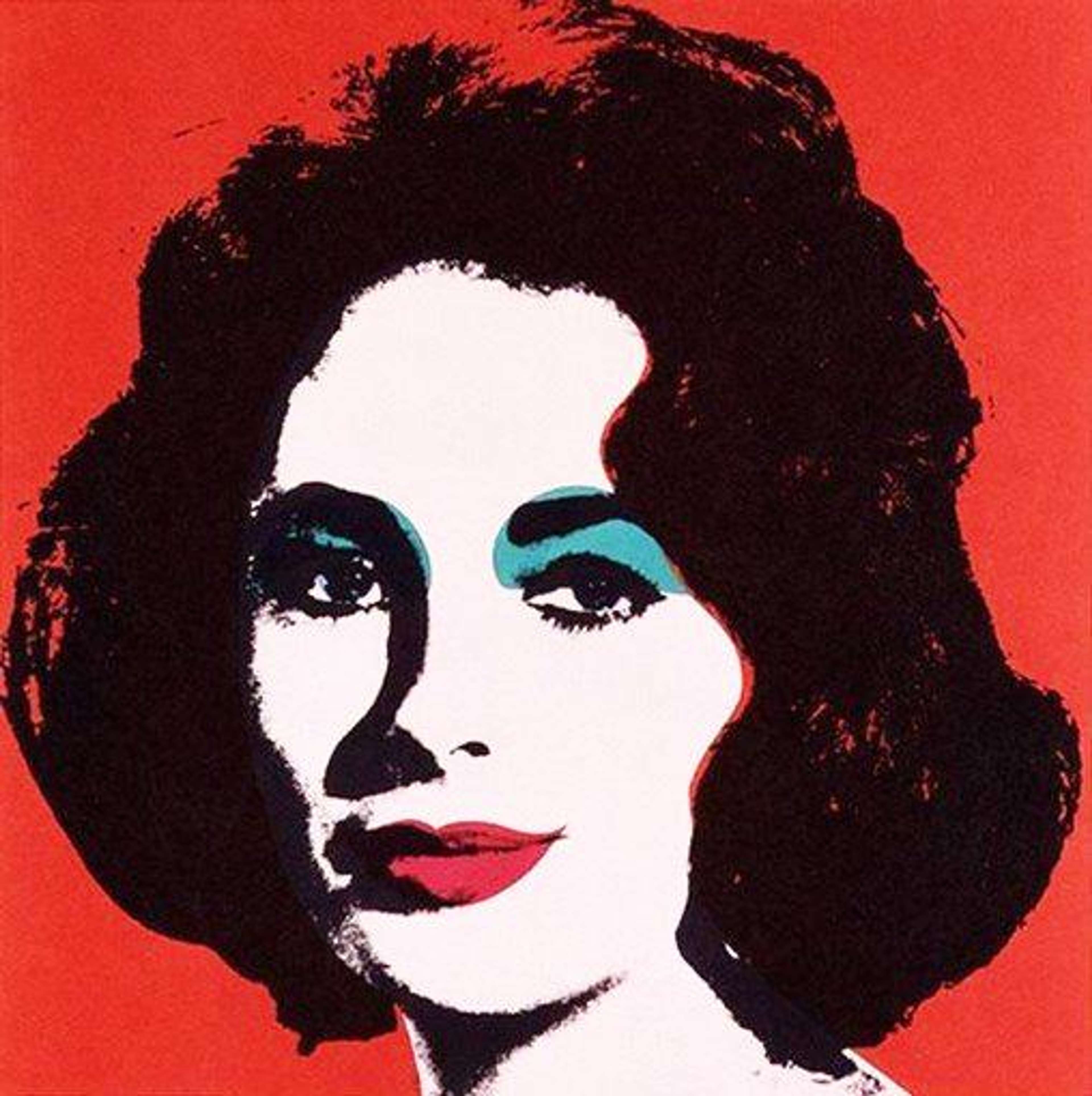 Beethoven Portfolio © Andy Warhol 1987
Beethoven Portfolio © Andy Warhol 1987
Interested in buying or selling
Andy Warhol?

Andy Warhol
487 works
In his Beethoven series, Andy Warhol moves away from celebrity life, fashion, and commercial products that constitute the characteristic subject matter across his body of work. Created shortly before the artist’s death, the portfolio engages with the image of the famous German composer to explore questions of legacy, genius, and fame.
Warhol’s Beethoven series belongs to an old tradition of works exploring a link between genius and madness.
 Beethoven (F. & S. II.391) © Andy Warhol 1987
Beethoven (F. & S. II.391) © Andy Warhol 1987The lone genius grappling with demons of his creative soul has long been a prominent motif in Western culture. Wielding a pen and empty music sheets in his hands, Beethoven in Warhol’s series is positioned vividly in relation to his craft as each of the four prints captures him in the process of composing. The famous German composer either stares intensely at an indefinite point before him or his eyes are covered with scribbles, signalling his inner torment as well as the intensity of his creative practice.
The series is permeated by the awareness of death.
 Skull (F. & S. II.157) © Andy Warhol 1976
Skull (F. & S. II.157) © Andy Warhol 1976The series gives insight into Warhol’s reckoning with his mortality as an artist. Warhol’s late pieces are imbued with his awareness of death; the figure of the composer who produced some of his most influential compositions at a stage of complete deafness seemed particularly relevant to him in this context.
The series is a rare example of Warhol’s abandonment of contemporaneity for the past.
 Liz © Andy Warhol 1964
Liz © Andy Warhol 1964In the Beethoven series, Warhol moved away from his exploration of contemporary celebrity life as associated with his most famous works, including Marilyn Diptych (1962), Liz (1964) or Debbie Harry (1980).
The series reappropriates Joseph Karl Stieler’s 1820 portrait.
 Painting of Ludwig Van Beethoven © Joseph Karl Stieler 1820 © Wikimedia Commons
Painting of Ludwig Van Beethoven © Joseph Karl Stieler 1820 © Wikimedia CommonsIn the original painting, the sternness of Beethoven’s gaze corresponds with the intensity of his creative process. The oil on canvas is among the most iconic portraits of the composer. Warhol’s choice to use it in the series reflects his interest in the commodification of culture and life.
Each of the four screen prints is overlaid with a sheet of music.
 Beethoven (F. & S. II.392) © Andy Warhol 1987
Beethoven (F. & S. II.392) © Andy Warhol 1987A sheet of music sprawls across the surface of prints included in the Beethoven series. By incorporating the music notes as a central layer, Warhol engages with the defining characteristic of the composer’s legacy and image.
The series sees a classical composer transformed into a rock star.
 Mick Jagger (F. & S. II.143) © Andy Warhol 1975
Mick Jagger (F. & S. II.143) © Andy Warhol 1975Warhol renders the composer in intense, contrasting colours, which clash with the conventional ways in which his likeness has usually been depicted. Featuring a pink face or blazing, scribbly dots instead of the eyes, Warhol’s version of Beethoven is closer to a rock star image - like his Mick Jagger series - than that of the classical composer.
The portfolio features key techniques that established Warhol as a leading Pop Art artist.
 Beethoven (F. & S. II.393) © Andy Warhol 1987
Beethoven (F. & S. II.393) © Andy Warhol 1987The series is produced through the medium of screen printing. To capture the dynamics of mass production and paradoxes involved in the relationship between humans and commodity, the Pop Artist engaged with the technique of screen printing that allowed him to reproduce photographs onto canvas and replicate images in large quantities.
The series represents Warhol’s enthusiasm for the themes of creativity and public images.
 Marilyn (F. & S. II.27) © Andy Warhol 1967
Marilyn (F. & S. II.27) © Andy Warhol 1967One way of looking at Beethoven’s presence in the series is through the lens of Warhol’s interest in the larger-than-life personal myths. While Warhol’s exploration of these myths is linked strongly to the public image of American celebrities, the Beethoven series captures how the artist takes a step back to look at his favourite themes in the context of a different time framework.
Beethoven’s Moonlight Sonata comes to the fore in Warhol’s series.
 Beethoven Portfolio © Andy Warhol 1987
Beethoven Portfolio © Andy Warhol 1987The melody that intertwines with Beethoven’s image is Sonata No. 14. Also known as the Moonlight Sonata, the composition established Beethoven as one of the leading composers in Vienna.
The series is based on intense and dramatic colours.
 Beethoven (F .& S. II.390) © Andy Warhol 1987
Beethoven (F .& S. II.390) © Andy Warhol 1987Legendary and radically innovative, Beethoven represents both the power of creativity and tragedy of limitations, as related to his hearing impairment. To engage with the latter, Warhol chose intense and dramatic colours as a key feature of the series.
